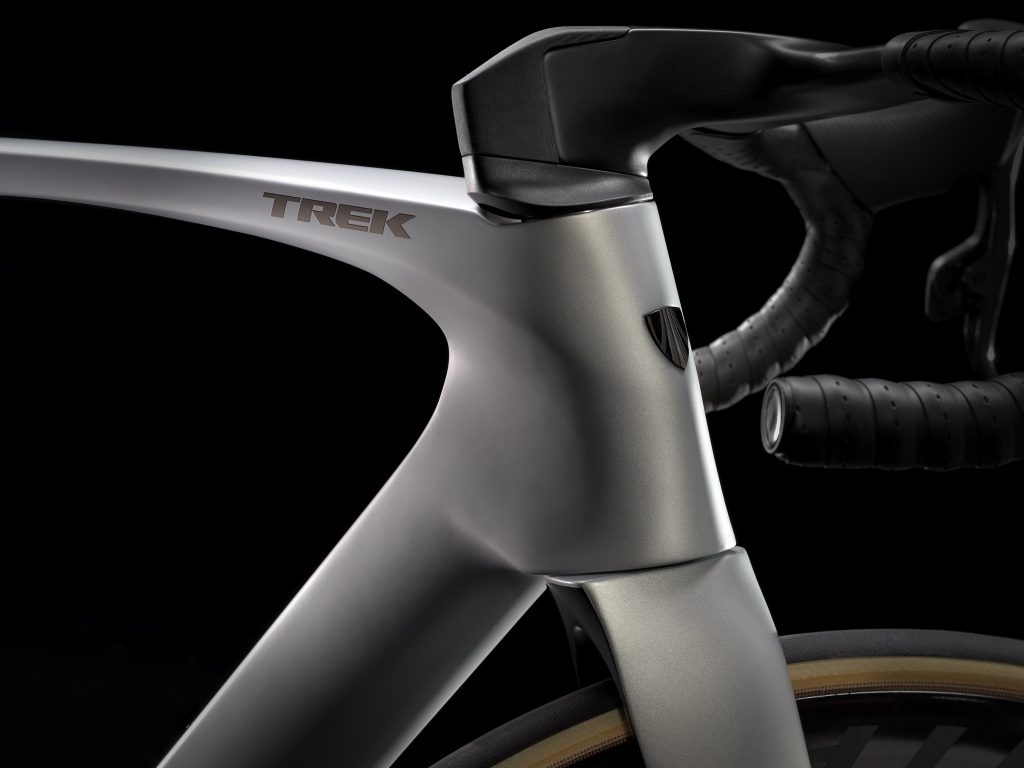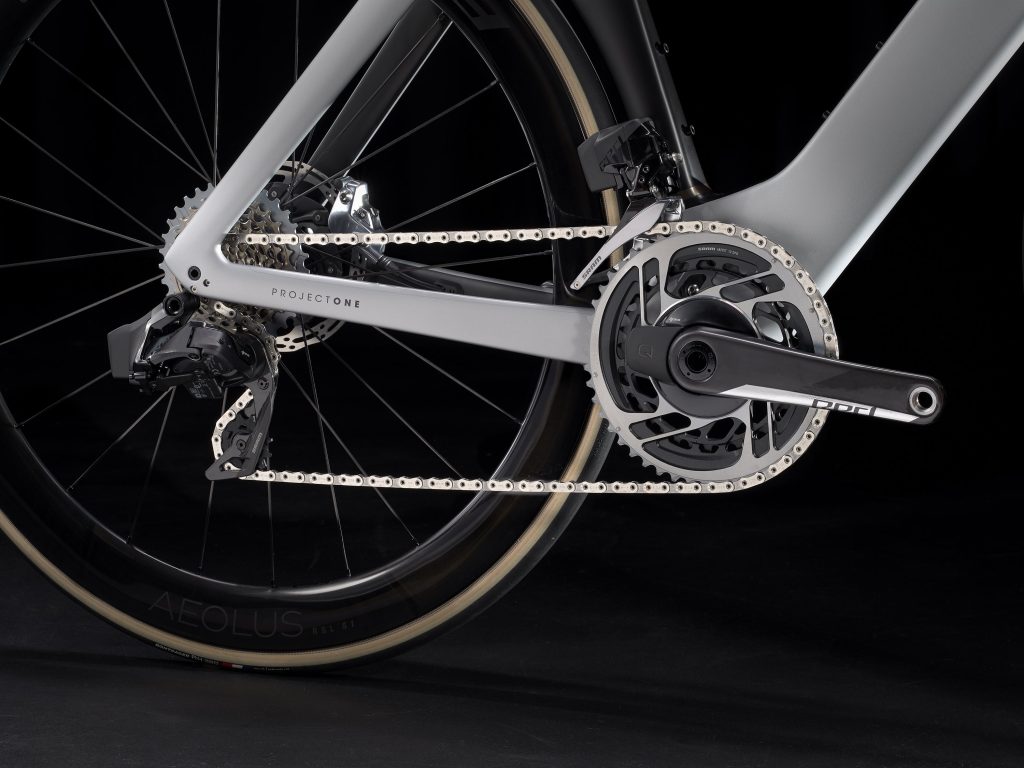Trek claims IsoFlow is the secret to the new Madone’s success.
Words Sam Challis
Photography Tapestry
Trek Madone SLR 9 eTap – $19,000*
Trek Madone SLR 9 Gen 7 – $18,000
* Please note SLR 9 eTap was incorrectly listed at $18,000 in issue 60 of Cyclist.

For the past few years the Trek Madone has been considered among the best aero road bikes at balancing aerodynamic efficiency with comfort. This was thanks to the inclusion of the IsoSpeed decoupler system, which Trek first introduced to the bike in 2015 and which has appeared in various forms on updated Madones ever since. Until now.
The latest model has been given an aggressive overhaul to become a claimed 300g lighter and save the rider up to 19 watts at 45kmh compared to the last generation. Trek says this is the fastest bike it has ever made, even though a 54cm Madone SLR 9 claims a weight of just 7.1kg. To achieve that, Trek has ditched the IsoSpeed and replaced it with a new system called IsoFlow.
IsoFlow is essentially a hole in the seat tube, but Trek says it provides a couple of big benefits for the new frameset. Firstly the IsoFlow shape cantilevers the top portion of the seat tube, introducing compliance to the area in a similar manner to IsoSpeed but without the need for complex pivots and adjustable flexing components.
‘The compliance IsoFlow provides is a similar amount of comfort as IsoSpeed did in its stiffest setting,’ says Jordan Roessingh, Trek’s director of road bikes. ‘We took out the adjustability of the old design because we found for most people it was “set and forget”. IsoFlow was a unique design challenge from a composite layup perspective, shaping perspective and even a safety perspective, but we’ve been making them for two years now so we’re confident in the concept’s durability.’

Secondly, the IsoFlow purports to improve aerodynamics. ‘It accelerates the air flowing around the head tube and into the low pressure zone behind the rider,’ says Alex Bedinghaus, Trek’s senior design engineer. Low-pressure air creates a lot of drag, as it is essentially pulling on the rider in a similar way to high-pressure air pushing on the rider from the front.
‘The hole in the seat tube funnels air into that low-pressure area faster, decreasing the drag on the rider,’ says Bedinghaus. ‘IsoFlow on its own creates a three-watt saving over the previous bike.’
A fully revised set of kamm-tail tube profiles plus bulked up dimensions in areas such as the much taller bottom bracket shell make up the rest of one half of the claimed 19-watt improvement. That is, the aerodynamic gains switching from the old design to the new while retaining the original bar.
According to Trek this equates to saving one minute every hour of riding at 45kmh. For most people, 45kmh isn’t a sustainable speed, so Trek says the new Madone still saves an effective 58 seconds when riding at 25kmh.
‘Bringing up the bottom bracket shell closer to the water bottles reduces the wake the bottles create,’ says Trek aerodynamicist Jon Davis. ‘Plus carbon layup scheduling and aerodynamic refinement is such an intensive, iterative process we were able to refine things purely by having better technology and a starting point that was further on than when we worked on the previous bike.’

Six of one, half a dozen of the other
The other half of the new Madone’s claimed advantage is apparently achieved by its one-piece cockpit placing the rider in a more aerodynamic position, by narrowing their frontal profile. In this, the bars flare at the drops much like a gravel bar.
‘The bars are 3cm narrower at the hoods than in the drops, so a 42cm bar [measured at the drops]has hoods that are 39cm apart,’ says Davis. ‘What’s more, the drop shape is more compact, with a 20mm shorter reach, meaning it should be more comfortable to spend more time down there.
‘We also worked to develop the shape of the cockpit with respect to the rider being downstream in the airflow, which isn’t something that’s often considered. That is a lot of interaction between the flow coming off the bars and the vortices that are created by the rider.’
For those bemoaning the apparent backwards step in adjustability the new one-piece cockpit brings, Trek says it will offer 14 different sizes of cockpit to help riders find the best fit, and the bike can fit a standard bar and stem combo by changing to a different headset top cap.



